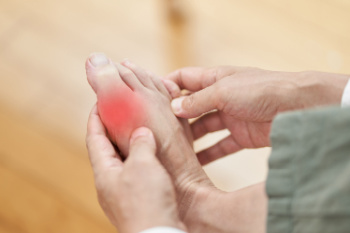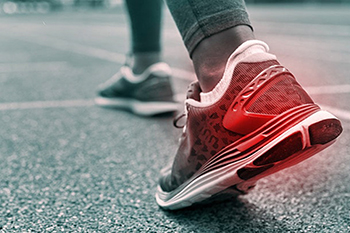Items filtered by date: August 2025
When Gout Leads to More Than Just Pain

Gout is a type of arthritis that causes sudden, painful joint inflammation, most often in the big toe. When left untreated or poorly managed, gout can lead to serious complications. Repeated attacks may damage joints, reducing mobility and causing permanent stiffness. Uric acid crystals can build up beneath the skin, forming visible lumps called tophi. These tophi may become tender or infected, and can appear on the feet, ankles, or other joints. High levels of uric acid may also affect the kidneys, leading to kidney stones or chronic kidney disease, over time. Frequent flare-ups can interfere with daily activities and lower quality of life. Early diagnosis and proper care are key to avoiding long-term damage. If you experience foot pain, swelling, or a history of gout that is worsening, it is suggested that you are under the care of a podiatrist for ongoing relief and management tips.
Gout is a painful condition that can be treated. If you are seeking treatment, contact Jennifer M. Kern, DPM from South Carolina. Our doctor will treat your foot and ankle needs.
What Is Gout?
Gout is a form of arthritis that is characterized by sudden, severe attacks of pain, redness, and tenderness in the joints. The condition usually affects the joint at the base of the big toe. A gout attack can occur at any random time, such as the middle of the night while you are asleep.
Symptoms
- Intense Joint Pain - Usually around the large joint of your big toe, and it most severe within the first four to twelve hours
- Lingering Discomfort - Joint discomfort may last from a few days to a few weeks
- Inflammation and Redness -Affected joints may become swollen, tender, warm and red
- Limited Range of Motion - May experience a decrease in joint mobility
Risk Factors
- Genetics - If family members have gout, you’re more likely to have it
- Medications - Diuretic medications can raise uric acid levels
- Gender/Age - Gout is more common in men until the age of 60. It is believed that estrogen protects women until that point
- Diet - Eating red meat and shellfish increases your risk
- Alcohol - Having more than two alcoholic drinks per day increases your risk
- Obesity - Obese people are at a higher risk for gout
Prior to visiting your podiatrist to receive treatment for gout, there are a few things you should do beforehand. If you have gout you should write down your symptoms--including when they started and how often you experience them, important medical information you may have, and any questions you may have. Writing down these three things will help your podiatrist in assessing your specific situation so that he or she may provide the best route of treatment for you.
If you have any questions, please feel free to contact our office located in West Columbia, SC . We offer the newest diagnostic and treatment technologies for all your foot care needs.
Do I Need Walking or Running Shoes?

Walking shoes and running shoes are designed with different purposes in mind. Walking shoes typically offer firmer soles, greater arch support, and a focus on heel-to-toe movement. Running shoes, on the other hand, provide more cushioning, flexibility, and shock absorption to handle the higher impact of running. Wearing the wrong type of shoe can lead to discomfort or injury, over time. A podiatrist can assess your gait, foot structure, and activity level to help you select the most appropriate footwear. If you experience foot pain or need guidance on proper shoes for walking or running, it is suggested that you schedule a visit with a podiatrist who can treat various foot conditions, and guide you on what type of shoes to wear for your desired activity.
For more information about walking shoes versus running shoes, consult with Jennifer M. Kern, DPM from South Carolina. Our doctor can measure your feet to determine what your needs are and help you find an appropriate pair of footwear.
Foot Health: The Differences between Walking & Running Shoes
There are great ways to stay in shape: running and walking are two great exercises to a healthy lifestyle. It is important to know that running shoes and walking shoes are not interchangeable. There is a key difference on how the feet hit the ground when someone is running or walking. This is why one should be aware that a shoe is designed differently for each activity.
You may be asking yourself what the real differences are between walking and running shoes and the answers may shock you.
Differences
Walking doesn’t involve as much stress or impact on the feet as running does. However, this doesn’t mean that you should be any less prepared. When you’re walking, you land on your heels and have your foot roll forward. This rolling motion requires additional support to the feet.
Flexibility – Walking shoes are designed to have soft, flexible soles. This allows the walker to push off easily with each step.
If you have any questions, please feel free to contact our office located in West Columbia, SC . We offer the newest diagnostic and treatment technologies for all your foot care needs.



